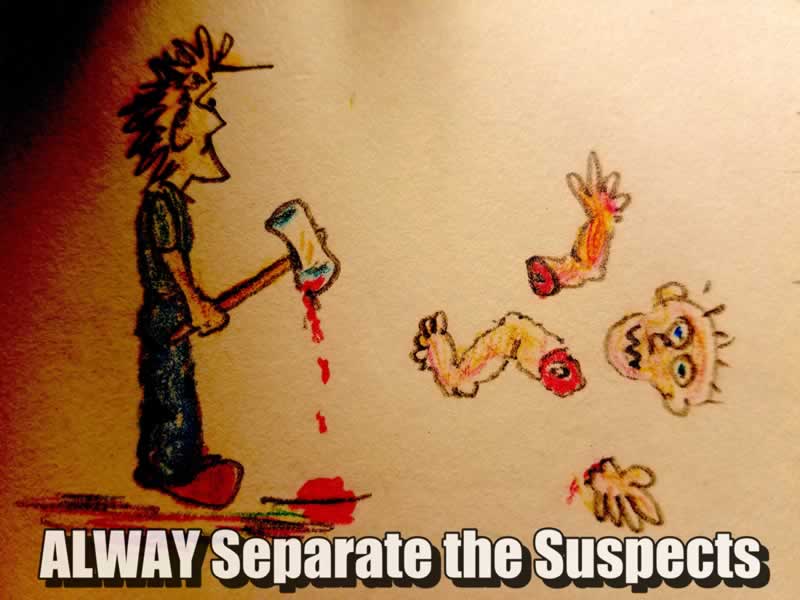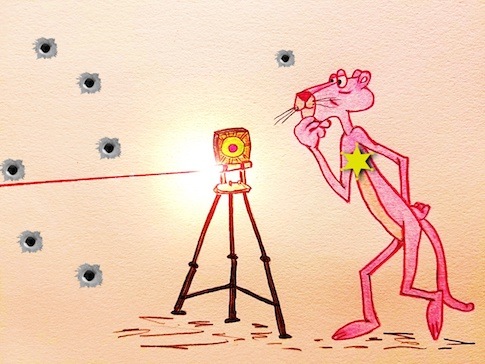You’re working patrol on the west side, the crime hub of your area, with thirty minutes to go on your last graveyard shift of the month. And, as your typical run of bad luck would have it, the only type of luck you’ve ever known, you catch the call. Homicide. Male victim. Multiple gunshot wounds. It’s a call that’ll have you working well into the next shift, causing you to miss out on precious early morning sleep
Your department’s small, with no crime scene unit and only two detectives. The senior detective is out sick. Doctors say she has a severe case of the Crawling Creepy-Cruds and won’t be able to return to work for several days. Her partner is away attending a weeklong cordite festival, a historical reenactment event where enthusiastic attendees dress up as characters who made the stuff (cordite) back at the end of WWII.
And, to top off this bout of wonderful misfortune, your sergeant is busy preparing his workshops for MurderCon, a special event hosted by the Writers’ Police Academy and Sirchie. You’re hoping to catch the keynote session this year because the guest of honor is bestselling author Andrew Grant, who, writing as Andrew Child, continues the internationally-bestselling Jack Reacher series with his brother Lee (Child).
Then, well, it’s two full days of crime solving paradise for writers, readers, fans, journalists, investigators, patrol officers, and anyone else who has an interest in seeing how crimes are solved in the real world. 2021 MurderCon classes include homicide investigations, toxicology—murder by poison, forensic entomology, forensic botany—plant evidence, cold cases investigations, human/fugitive tracking, FBI case studies, and much more. To sweeten the pot, each attendee will receive a cool mini Sirchie fingerprint kit to use during a hands-on class..
Now back to the homicide case du jour.
Do you, as responding officer, remember the basics? After all, with the exception of the occasional strong-arm robbery and nabbing a few peeping Toms, you’ve mostly done nothing for the past six years but write traffic tickets and respond to B&Es and he-said-she-said calls.
What do you do first?
Well …
- Call for backup/assistance. If needed, the sheriff’s office and/or state police would probably send someone over to help. Besides, the killer may be waiting at the scene to ambush a cop. Don’t be a hero!
- Avoid tunnel vision while on the way to the scene. Sometimes the bad guy can be found walking or running away, or hanging around to see the police lights and subsequent activity.

- Secure the scene. Set up some sort of perimeter. The sheriff’s deputy could help with this duty. If your department is really small, other first-responders, such as firefighters and EMS, could help with stretching and hanging crime scene tape. Otherwise, have fellow officers seal the area to prevent anyone from entering and exiting.
- Record the names and contact information of everyone in the area.
- Separate the witnesses.

No, not that kind of separation …
- Render first aid, if necessary. Call for EMS and the medical examiner.
- Survey the scene. Develop a mental picture of what happened.
- Examine the area for tracks. There may be an identifiable mark, brand, or logo. You may be surprised to see one of the nosy looky-loos wearing that very shoe.
- If possible, collect or protect items of evidence before the medical examiner’s team and/or EMS enters the scene. Remember, writers, in some rural areas a medical examiner, or coroner, may not visit the scene, opting for EMS to transport the body to the morgue for examination/autopsy.
Trust me, EMS is not kind to evidence. Their priority is to save or revive the victim. Therefore, when the scene is a hot one, where there’s a possibility that they could save a life, they’ll trample, stomp, drag, kick, and move whatever’s in their path.
The aftermath of EMS and fire personnel (aka – Evidence Eradication Team, or EES) sometimes has the appearance of the destruction left behind by a small tornado. Stuff—gauze, paper wrappings, IV lines, dropped or discarded bandages, shoe and bootprints—is everywhere and, well, when they’re gone detectives look around and wonder … WTF just happened to my crime scene?
- Make notes of everything, including the date, time, weather conditions, etc.
- Document statements made by the M.E.. Record the M.E.’s time of arrival and the time the body is removed. Notes. Notes. And more notes.
- Chain of custody has begun. Document all evidence collected and who took possession of it, including the body. Was the body bag sealed? Did the medical examiner transport the body to the morgue, or was it transported by the ambulance service?
- Photograph everything. I mean E.V.E.R.Y.T.H.I.N.G.
- If you’re lucky enough to have one handy, use a laser scanner to record details and measurements of the crime scene

- Question as many witnesses as possible before calling it a night. It’s best to get statements before they’ve had chance to talk to anyone, or perhaps get cold feet and not want to get involved. Besides, people tend to forget things in a hurry. They also tend to exaggerate or embellish a story if given the time to do so.
- Be sure the notes you jot down are things you won’t mind having read aloud in court. Defense attorneys may ask to see your notes, and it would be embarrassing to hear your grocery list, or the beginnings of a mushy poem dedicated to your beloved schnauzer, read aloud to the jury.
- Develop and use a written crime scene checklist. By doing so your testimony will be consistent in each and every case.
- Be careful not to contaminate or transfer DNA evidence. Even fingerprint brushes can transfer DNA, so you should use a fresh brush for each crime scene. It would certainly ruin your credibility to have the DNA from the victim in your last case show up in the current one. Fingerprint powder can also become contaminated by dusting a surface and then dipping the brush back into the container for more powder.
- Collect everything that could be used as evidence. Who knows what you may need later. Remember, it wasn’t all that long ago when scientists began using DNA found in evidence from old cases.
- The last item on the mental checklist … use common sense.
* This list is not an official, standard checklist. Nor are the steps listed in a particular order. A formal, universal list does not exist. Each agency has its own policy, and each investigator has his/her own method of solving crimes.
MURDERCON
Registration Opens in March 2021!
Spots are Limited for this unique learning experience brought to you by the Writers’ Police Academy and Sirchie.
2021 Guest of Honor – Andrew Grant (Child)

Andrew Grant was born in Birmingham, England in May 1968. He went to school in St Albans and later attended the University of Sheffield where he studied English Literature and Drama. After graduation Andrew set up and ran a small independent theatre company which showcased a range of original material to local, regional and national audiences. Following a critically successful but financially challenging appearance at the Edinburgh Fringe Festival Andrew moved into the telecommunications industry as a ‘temporary’ solution to a short-term cash crisis. Fifteen years later, after carrying out a variety of roles – including a number which were covered by the UK Official Secrets Act – Andrew escaped from corporate life, and established himself as a critically-acclaimed author. He published nine novels under his own name, and in 2020 began a collaboration – writing as Andrew Child – with his brother Lee, to continue the internationally-bestselling Jack Reacher series. He is married to novelist Tasha Alexander, and lives on a wildlife preserve in Wyoming, USA.



